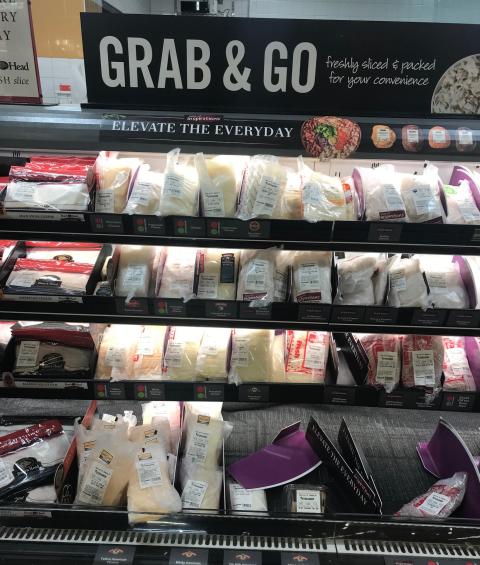How Fresh Foods Departments Are Evolving

With more consumers perusing the fresh perimeter for ideas on preparing at-home meals during these high inflationary times, FMI – The Food Industry Association has released a new report that explores how food retailers are responding to this heightened consumer interest in fresh food items.
FMI's inaugural “The State of Fresh Foods” report highlights findings from the-soon-to-be-released “The Food Retailing Industry Speaks 2022” analysis and substantiates unwavering momentum for fresh food departments in grocery.
“The pandemic changed Americans’ grocery shopping and cooking habits, with more of us enjoying meals at home with family members,” said Leslie Sarasin, CEO and president of Arlington, Va.-based FMI. “These broad-level changes particularly impacted fresh foods departments, and even as we shift to more in-person activities, shoppers continue to rely on their grocery stores for fresh food items. Food retailers and suppliers are responding to the heightened consumer interest in fresh food items with enhanced, affordable offerings both in-store and online.”
[Read more: “Why Grocers Should Bet on Fresh Convenience and Prepared Foods”]
“As we look at fresh foods departments, it’s important to see where businesses are investing and how the food industry is responding to changing consumer trends,” noted Rick Stein, VP of fresh foods for FMI. “Two important areas stand out. First, the fact that 40% of online sales are being generated by fresh foods departments suggests a major change from previous trends. Second, it is significant to note the emphasis that retailers are putting on foodservice and prepared foods departments.”
Fresh Categories Gain Online Share of Sales
As mentioned, fresh food offerings are becoming more prominent players in e-commerce. Fresh or perimeter departments now comprise 40% of all online sales, rivaling dry grocery online sales (41%) and surpassing frozen online sales (11%).
Enhanced Space and Staff for Foodservice
Food retailers are re-envisioning fresh food departments with enhanced space allocation. Eighty-two percent are planning to grow their space allocation for fresh-prepared grab-and-go options.
Fresh meal providers like FreshRealm are helping retailers grow this category. FreshRealm recently closed on a $200 million capital raise. According to the Ventura, Calif.-based company, it's the only fresh meal provider to deliver a national platform that simplifies how fresh ready-to-cook, ready-to-heat and low-prep meal kits are brought to the table.
FMI's report also found that grocers are increasing space for fresh-prepared chef made-to-order stations (35%) or fresh-prepared self-service (29%). Additionally, retailers are increasing staff for foodservice (44% of retailers planning to do so), trained or certified chefs (22%), in-store dining (20%), and scratch bakers or pastry chefs (18%).
Experimenting With Foodservice Experiences
Food retailers surveyed are getting creative with their service differentiation strategies by experimenting with new consumer touchpoints like in-store dining (51%), a coffee bar (39%), online ordering and pickup/delivery of foodservice offerings (33%), catering services (30%), a juice bar (20%), and a full-service restaurant (13%). In fact, San Francisco-based Instacart recently revealed that it's offering online catering ordering and delivery. Additionally, Cincinnati-based Kroger has been working with Kitchen United, based in Pasadena, Calif., to offer multi-restaurant ordering for takeout or delivery, most recently setting up operations in the grocer's Dallas Kroger location.
FMI reports that the success of some of these programs has been mixed, however. Retailers report a success rate of as high as 60% for juice bars to as low as 13% for online ordering and pickup/delivery of foodservice offerings, revealing an opportunity for retailers to explore other specialty options.
Key insights from “The State of Fresh Foods” report were shared at a keynote address by Sarasin during FMI’s recent FreshForward event.
As the food industry association, FMI works with and on behalf of the entire industry to advance a safer, healthier and more efficient consumer food supply chain. FMI brings together a wide range of members across the value chain — from retailers that sell to consumers, to producers that supply food and other products, as well as the broad variety of companies providing critical services — to amplify the collective work of the industry.






